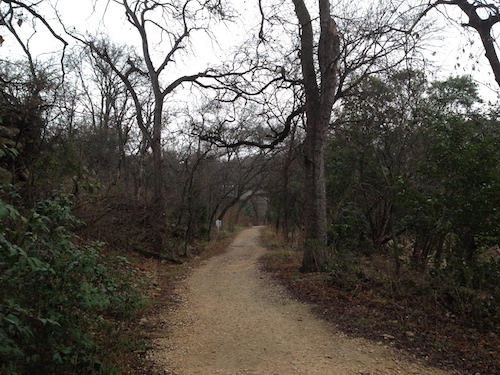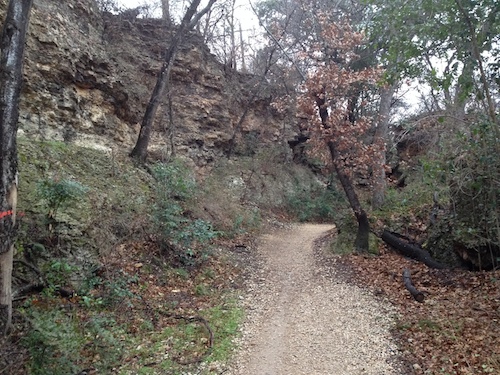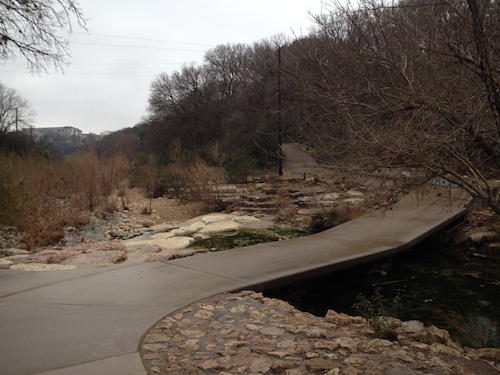
(Image credit: Jay Voss)
The park that stretches along Austin’s Shoal Creek is pretty amazing when you think about it. Starting near Lady Bird Lake downtown, the trails and bikeways wind all the way up towards 38th street. By my approximated Google Maps calculation, that’s nearly three and a half miles of gravel path, all of which feeds into the much longer Lady Bird Lake Hike and Bike Trail (discussed in my last post). Like the trails around Lady Bird Lake, in good weather the parkland around Shoal Creek is routinely flooded with Austinites seeking exercise and a break from concrete and metal. Joggers, walkers, and “mountain” bikers all frequent the trail. Around about 25th Street there is a leash free area for pets. At Martin Luther King Jr. Boulevard there are three beach volleyball courts. Just north of 15th Street there’s an extensive playground and more volleyball courts. On the surface of things, there’s nothing exceptional about these recreation areas. Most communities throughout the United States provide their residents with public recreation. Indeed, community owned recreation areas have probably been a part of human settlements for longer than we can imagine. What I think is unique about Austin’s Shoal Creek and the surrounding environs is the extent to which the park consciously embodies a natural environment that challenges the skyscrapers in the distance.

(Image credit: Jay Voss)
Based upon the photographs throughout this post, one would be forgiven for thinking that Shoal Creek is out in the countryside. I imagine that anyone who has spent any time in this park has wondered for a brief moment what happened to the city. This is only an illusion, of course – the roar of car engines is never far away, and probably often snaps daydreaming joggers right back to attention. Nevertheless, I think it’s an important illusion. For kicks I’d suggest that it’s really quite brilliant landscape design given that 95% of pedestrians and cyclists are listening to music anyways. But alas, I think the area was developed long before Steve Jobs. More to the point, I think it’s remarkable that Austin, and burgeoning urban space, has left such a central, giant swath of nature untouched.

(Image credit: Jay Voss)
To some extent, the apparent seclusion and scenery shouldn’t be that surprising, and we can’t overdo the accolades. I can’t imagine any other way this sliver of town could have been developed. For all intents and purposes, the entire midtown stretch of creek bed basically forms a valley, with several limestone cliffs rising above the waterway as it makes its way towards Lady Bird Lake. The creek also functions as a spillway for the surrounding residential areas, which is really a basic necessity for a large group of homes. Try to run on the Shoal Creek trails during a massive rainstorm and each of the creek crossings will be flooded over with runoff. Nonetheless, utility and pragmatism aside, it’s really amazing to see that the city of Austin has used this creek as an opportunity to offer themselves a semi-natural workout zone.



Recent comments
2 years 29 weeks ago
2 years 44 weeks ago
2 years 44 weeks ago
2 years 50 weeks ago
3 years 4 weeks ago
3 years 4 weeks ago
3 years 4 weeks ago
3 years 6 weeks ago
3 years 6 weeks ago
3 years 6 weeks ago